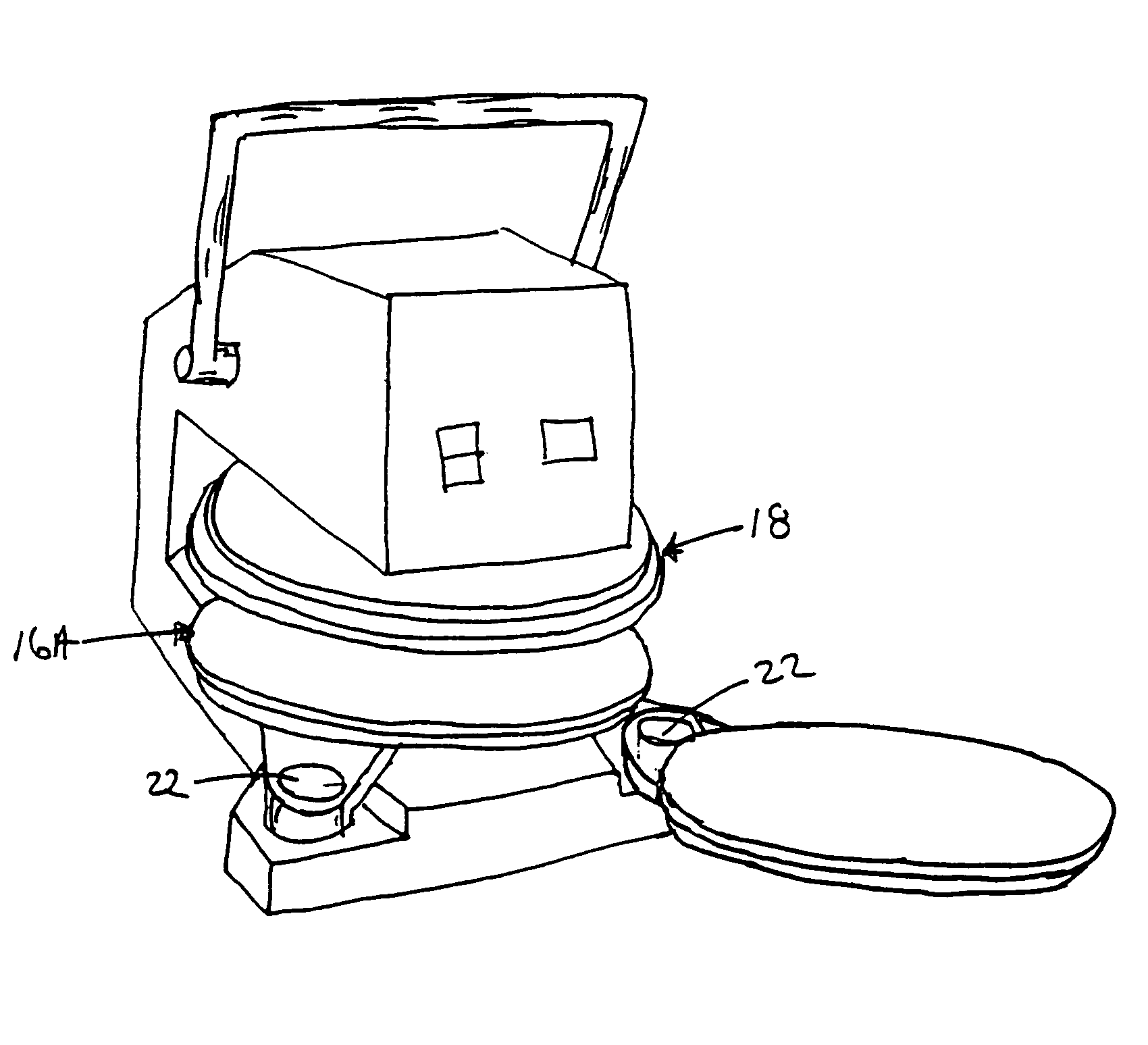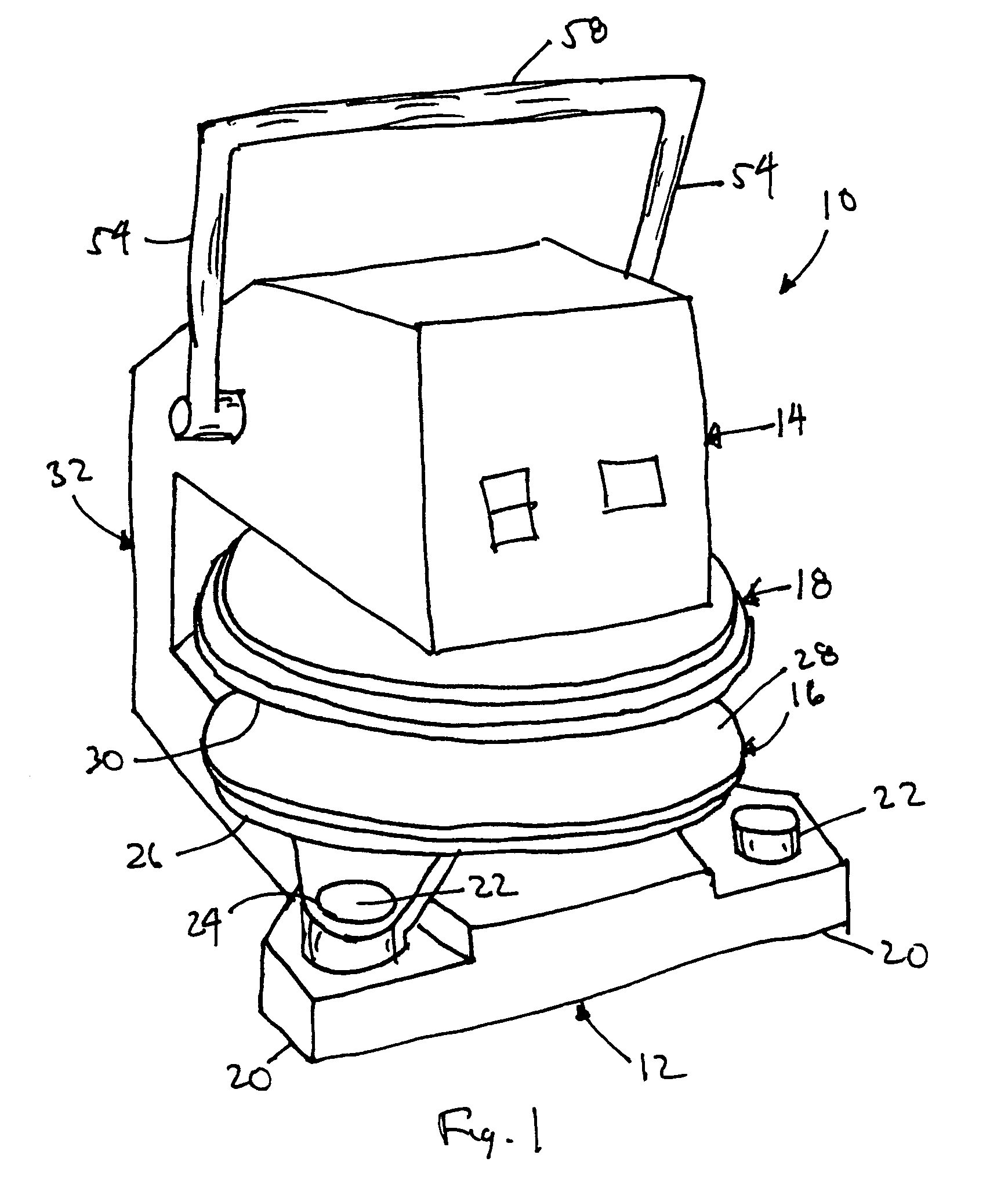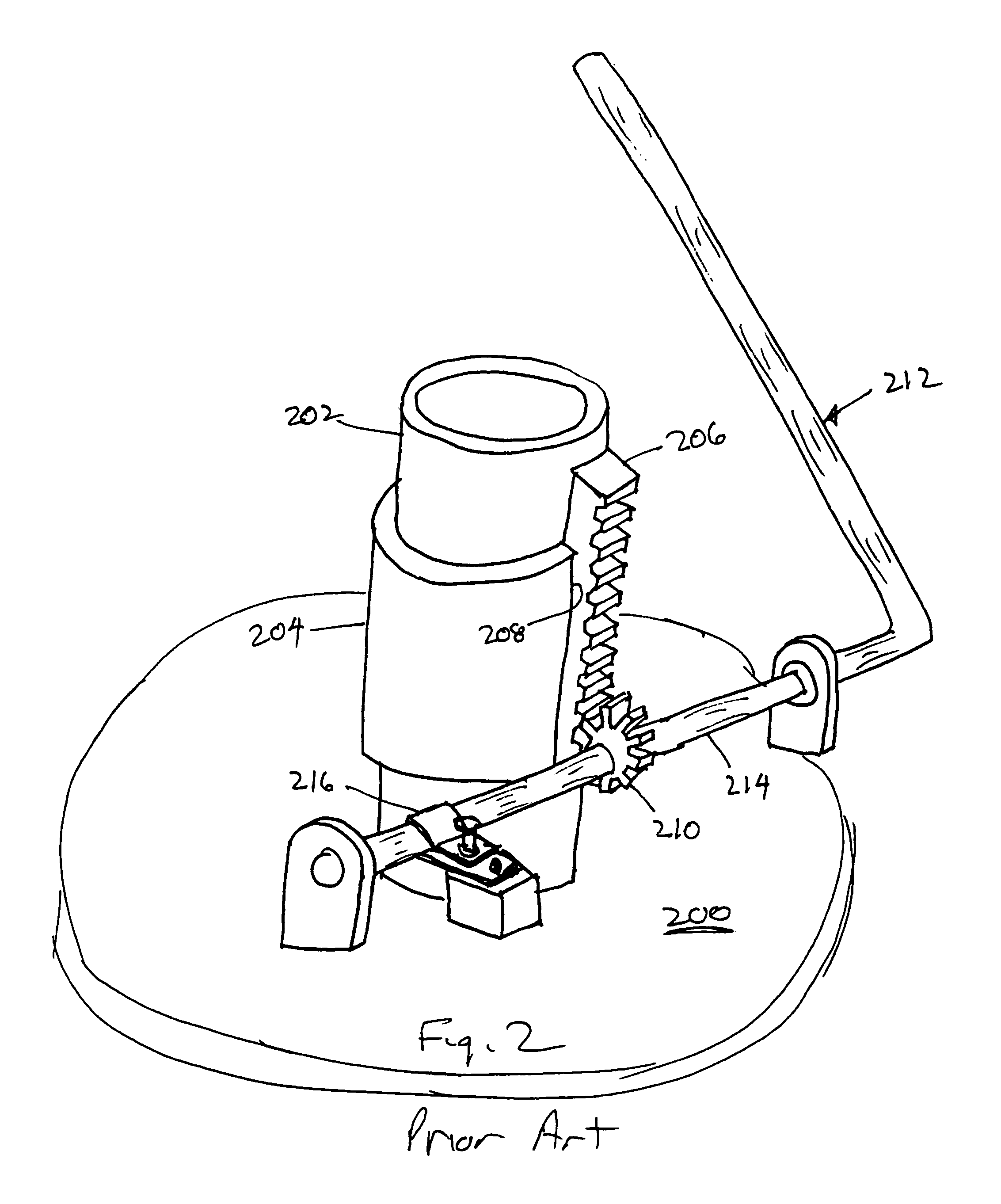Dough press with dual lower platens
a technology of double-platen and dough press, which is applied in the field of manual presses, can solve the problems of reducing the effectiveness of dough press, requiring more work by the operator to raise and lower the platen, and reducing the safety hazards of the operator, so as to achieve less maintenance and cleaning
- Summary
- Abstract
- Description
- Claims
- Application Information
AI Technical Summary
Benefits of technology
Problems solved by technology
Method used
Image
Examples
Embodiment Construction
[0041]The dough press 10 of the present invention is shown in the figures. The dough press 10 includes frame 32 that has a base 12 supporting a lower platen 16 and an upper housing 14 supporting an upper platen 18. The platens 16, 18 are supported substantially horizontally and substantially in parallel with each other. The upper housing 14 includes a drive mechanism whereby the upper platen 18 is manually moved toward and away from the lower platen 16. In the open position, the upper platen 18 is spaced from the lower platen 16. In the closed position, dough placed on the lower platen 16 is compressed between the upper platen 18 and lower platen 16.
[0042]Typically, the working surface 30 of the upper platen 18 and the working surface 28 of the lower platen 16, that is, the opposed surfaces that make contact with the dough being worked, are flat. The result after pressing is a flat sheet of dough. The present invention, however, contemplates that the working surfaces 28, 30 may incl...
PUM
| Property | Measurement | Unit |
|---|---|---|
| resiliency | aaaaa | aaaaa |
| stored mechanical energy | aaaaa | aaaaa |
| pressure | aaaaa | aaaaa |
Abstract
Description
Claims
Application Information
 Login to View More
Login to View More - R&D
- Intellectual Property
- Life Sciences
- Materials
- Tech Scout
- Unparalleled Data Quality
- Higher Quality Content
- 60% Fewer Hallucinations
Browse by: Latest US Patents, China's latest patents, Technical Efficacy Thesaurus, Application Domain, Technology Topic, Popular Technical Reports.
© 2025 PatSnap. All rights reserved.Legal|Privacy policy|Modern Slavery Act Transparency Statement|Sitemap|About US| Contact US: help@patsnap.com



